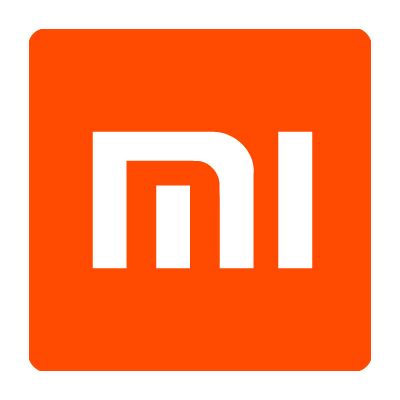Xiaomi SWOT Analysis: strength based on cost advantage
 In business context, SWOT acronym stands for strengths, weaknesses, opportunities and threats associated with the company. The following table illustrates Xiaomi SWOT analysis
In business context, SWOT acronym stands for strengths, weaknesses, opportunities and threats associated with the company. The following table illustrates Xiaomi SWOT analysis
| Strengths
1. Efficient leadership by Lei Jun 2. Impressive growth rate 3. Cost advantage 4. Brand value estimated at USD 100 billion[1] |
| Weaknesses
1. Low profit margin 2. Lower smartphone capabilities and functionalities compared to major competitors such as Apple and Samsung 3. Competitive advantage difficult to sustain 4. Lack of experience in the global marketplace |
| Opportunities
1. Increasing presence in cloud segment 2. Formation of strategic collaborations 3. Focusing on marketing strategy 4. Achieving a disruptive innovation in the industry as a result of research and development |
| Threats
1. Market saturation in smartphone industry 2. Increase in the costs of resources 3. Issues with product functionality 4. Emergence of CSR-related scandals |
Xiaomi SWOT analysis
Strengths in Xiaomi SWOT Analysis
`1. Xiaomi co-founder and CEO Lei Jun is an effective business leader named “Businessman of the Year” 2014 by Forbes Asia. Dubbed the ‘new Steve Jobs’, Lei Jun is perceived as the face of China Inc, along with Alibaba Founder Jack Ma.[2] Moreover, it is said that Lei has never yelled at his staff. When he encounters a problem, he just smiles and gets down to business, and tries to find a solution. In social gatherings, Lei is always a good listener.[3] Efficient and visionary leadership style is one of the major factors behind the phenomenal growth of the internet technology company.
2. The electronics and software company has enjoyed an impressive growth rate since its foundation in 2011. In Q4 2017, Xiaomi became the world’s No.4 in terms of quantity of shipments. Despite the decline of 6,3% in the global smartphone market, Xiaomi managed to maintain a year-on-year growth of 96.9%, the only brand demonstrating continuous growth.[4] Moreover, Xiaomi became number one smartphone vendor in India in Q3 2017, with a market share of 23.5%. The company shipped 9,2 million smartphones in India in this quarter alone.[5]
3. Cost advantage is one of the major strengths associated with Xiaomi. The profit margin of as low as 3%[6] and mainly focusing on online sales channels enables the company to price its products considerably lower compared to the competition. It has been noted that “because a Xiaomi phone does deliver more than 90 percent of the functionality of an iPhone for less than 50 percent of the price that Xiaomi has a competitive edge.”[7]
4. Xiaomi brand value has been estimated as much as USD 100 billion[8]. The mobile internet company has raised funds at a USD45 billion valuation in 2014 and it could be the biggest IPO since Alibaba Group Holding Ltd.’s USD25 billion debut. An immense brand value can be interpreted as a convincing indicator of customer loyalty and potential of the company.
Weaknesses in Xiaomi SWOT Analysis
1. Low profit margin can be shown as a noteworthy weakness associated with Xiaomi. A filing at the end of 2013 revealed that Xiaomi’s operating margin was just 1.8%.[9] Although low profit margin is necessary for the internet technology company to sustain its cost-based competitive advantage, it also subjects the brand to certain risks. Specifically, there is a higher risk for Xiaomi that a decline in sales volume will erase its profit and this may result in a net loss for the period. Moreover, low profit margin may limit R&D investments for the electronics and software company, thus compromising its long-term growth prospects.
In contrast, Apple, one of the main competitors for Xiaomi maintains a high profit margin. For example, the raw cost of iPhone X has been estimated USD 357, but Apple priced it USD 999.[10] Unlike Xiaomi, a high profit margin allows Apple to maintain its operations in times of economic uncertainties thanks to cash reserves.
2. Lack of product innovation, and lower smartphone capabilities and functionalities compared to major competitors such as Apple and Samsung is another weakness associated with Xiaomi. The company is often criticized for the lack of innovation in its products. It has been noted that “unlike Xiaomi, its competitors were able to offer something new and innovative. Vivo offered curved screens; Oppo and OnePlus dangled rapid charging; LeEco offered exclusive content; and Huawei threw in dual lens cameras and fingerprint sensors.”[11]…
Xiaomi Inc. Report contains a full version of Xiaomi SWOT Analysis. The report illustrates the application of the major analytical strategic frameworks in business studies such as PESTEL, Porter’s Five Forces, Value Chain analysis, Ansoff Matrix and McKinsey 7S Model on Xiaomi. Moreover, the report contains analyses of Xiaomi leadership, organizational structure, business strategy and organizational culture. The report also comprises discussions of Xiaomi marketing strategy, ecosystem and addresses issues of corporate social responsibility.
[1] Xiaomi Chooses Morgan Stanley, Goldman Among IPO Banks (2018) Bloomberg, Available at: https://www.bloomberg.com/news/articles/2018-01-15/xiaomi-is-said-to-choose-morgan-stanley-goldman-among-ipo-banks
[2] White, G. (2014) “13 Things You Didn’t Know about Xiaomi’s Lei Jun” Available at: http://www.manufacturingglobal.com/leadership/13-things-you-didnt-know-about-xiaomis-lei-jun
[3] Tin-yau, K. (2017) “Character lessons from Xiaomi’s Lei Jun” Ejinsight, Available at: http://www.ejinsight.com/20170710-character-lessons-from-xiaomis-lei-jun/
[4]Lei, J. (2018) “AFTER CROSSING RMB 100B REVENUE MILESTONE, A NEW JOURNEY FOR XIAOMI BEGINS IN 2018” MI, Available at: http://blog.mi.com/en/2018/02/07/after-crossing-rmb-100b-revenue-milestone-a-new-journey-for-xiaomi-begins-in-2018/
[5] XIAOMI IS THE NUMBER ONE SMARTPHONE VENDOR IN INDIA IN Q3 2017 (2017) Xiaomi,Available at: http://blog.mi.com/en/2017/10/14/xiaomi-is-the-number-one-smartphone-vendor-in-india-in-q3-2017/
[6] Kharpal, A. (2014) “What’s behind rapid rise of ‘China’s Apple’ Xiaomi?” CNBC, Available at: https://www.cnbc.com/2014/12/22/whats-behind-rapid-rise-of-chinas-apple-xiaomi.html
[7] Ross, J. (2015) “Xiaomi or Apple – two innovation strategies for China” China.org.ch, Available at: http://www.china.org.cn/opinion/2015-04/13/content_35307226.htm
[8] Xiaomi Chooses Morgan Stanley, Goldman Among IPO Banks (2018) Bloomberg, Available at: https://www.bloomberg.com/news/articles/2018-01-15/xiaomi-is-said-to-choose-morgan-stanley-goldman-among-ipo-banks
[9] Sun, L. (2016) “How Does Xiaomi Technology Make Money?” The Motley Fool, Available at: https://www.fool.com/investing/2016/06/03/how-does-xiaomi-technology-make-money.aspx
[10] Spence, E. (2017) “iPhone X Price Confirms Apple’s Love Of Profit” Forbes, Available at: https://www.forbes.com/sites/ewanspence/2017/11/08/apple-iphonex-profit-margin-price-cost/#629d59c11a1c
[11] Gilbert, D. (2016) “How Xiaomi lost $40bn: Where it all went wrong for the ‘Apple of the East’” International Business Times, Available at: https://www.ibtimes.co.uk/how-xiaomi-lost-40bn-where-it-all-went-wrong-apple-east-1576781

